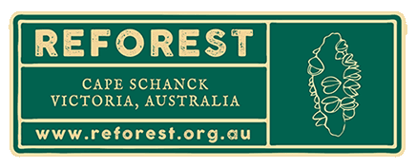Tetragonia implexicoma - Bower Spinach
Tetragonia implexicoma - Bower Spinach
Habit and Habitat:
Tetragonia implexicoma, commonly known as Bower Spinach, is a unique, resilient species that thrives in a variety of environments, including coastal dunes, brackish water, and sandy soils, making it a versatile and hardy addition to any home garden.
Place in Local Habitat and Ecosystem Distribution:
Bower Spinach plays a crucial role in various habitats, particularly in coastal regions and sandy environments. Common along the coastline on cliffs, sand dunes and in foreshore scrub but occasionally extending inland along tidal or brackish waterways.
Planting Companions:
In your home garden, consider planting Bower Spinach alongside other native Australian species like Pigface (Carpobrotus, Disphyma), Coastal Wattle (Acacia longifolia), and Banksia species. These companion plants create a visually appealing and ecologically harmonious landscape.
Human and Wildlife Uses:
Bower Spinach has historical and contemporary uses for both humans and wildlife. Indigenous Australians have traditionally consumed the leaves as a leafy green vegetable, and it remains a valuable edible plant today. The berries were used as a source of red dye and the fruit is one of the tastiest and more substantial coastal fruits. Additionally, its flowers provide a nectar source for pollinators, its berries are consumed by birds and possums, and its growth habit provides selter for a range of wildlife.
Care Instructions:
To cultivate Bower Spinach successfully in your home garden, select a sunny to partially shaded location with well-draining, sandy soil. This species is well-suited to dry conditions and can tolerate salt spray in coastal areas. Regular pruning, training leader branches and harvesting will help maintain its growth and shape.
Size, Height, Width, Flower, and Leaf Characteristics:
Bower Spinach typically forms a low, spreading ground cover, reaching heights of around 30-40 centimeters and spreading up to 2 metres or more. Its succulent leaves are bright green and edible, while the inconspicuous flowers are small and yellow.
Latin Etymology:
The genus name "Tetragonia" is derived from the Greek word "tetragonos," meaning four-angled, which describes the shape of the fruit on other species. The species name "implexicoma" suggests that the plant has intertwined or tangled branches.
Planting Guidelines:
To plant Bower Spinach in your home garden, prepare well-draining sandy soil with good sunlight exposure. Space the plants adequately to allow for spreading growth. Regular harvesting of leaves for culinary use will not only provide you with a nutritious addition to your meals but also help maintain the plant's form and vigor. Bower Spinach is a valuable and versatile addition to your garden, providing both aesthetic and culinary benefits.

